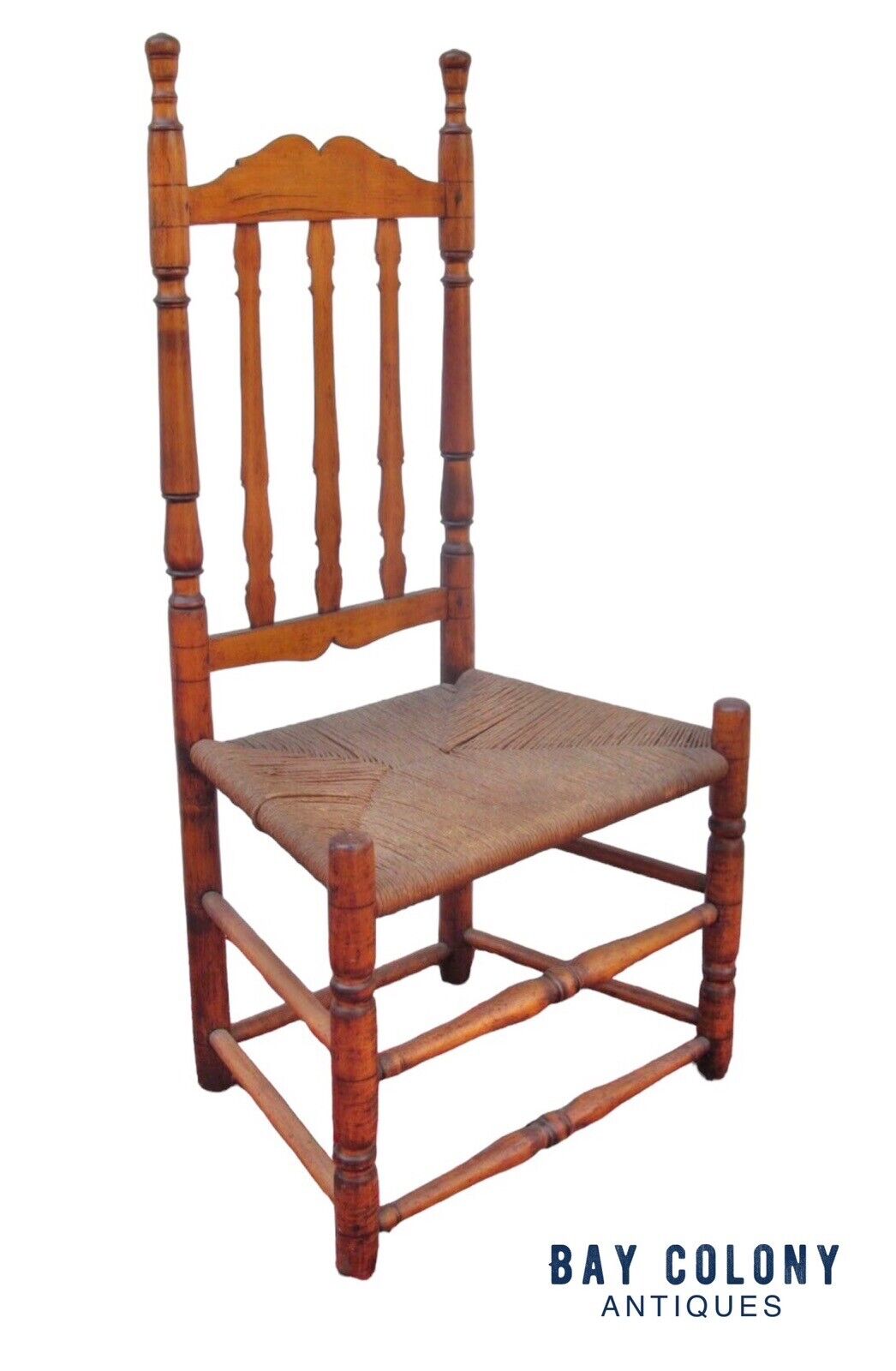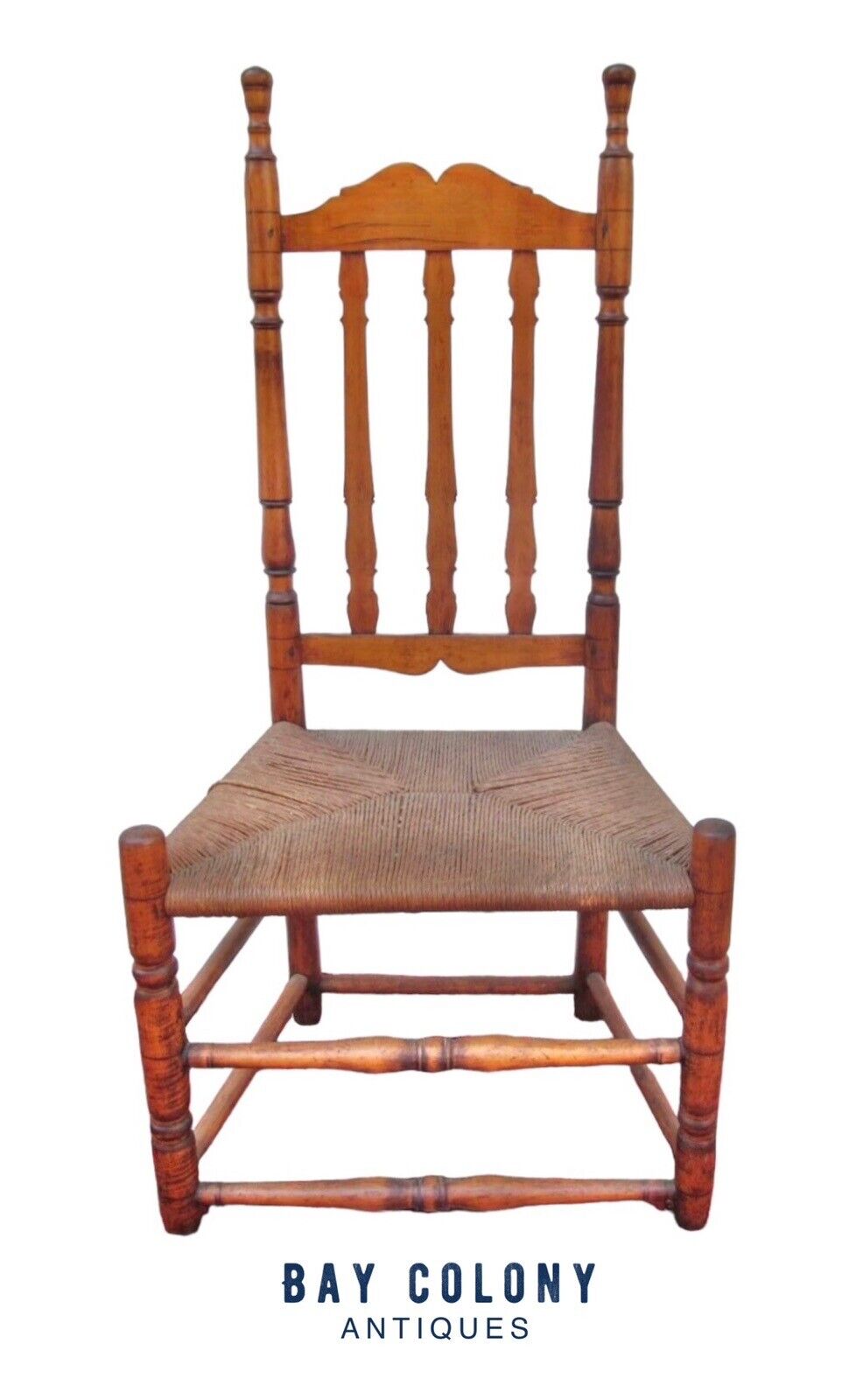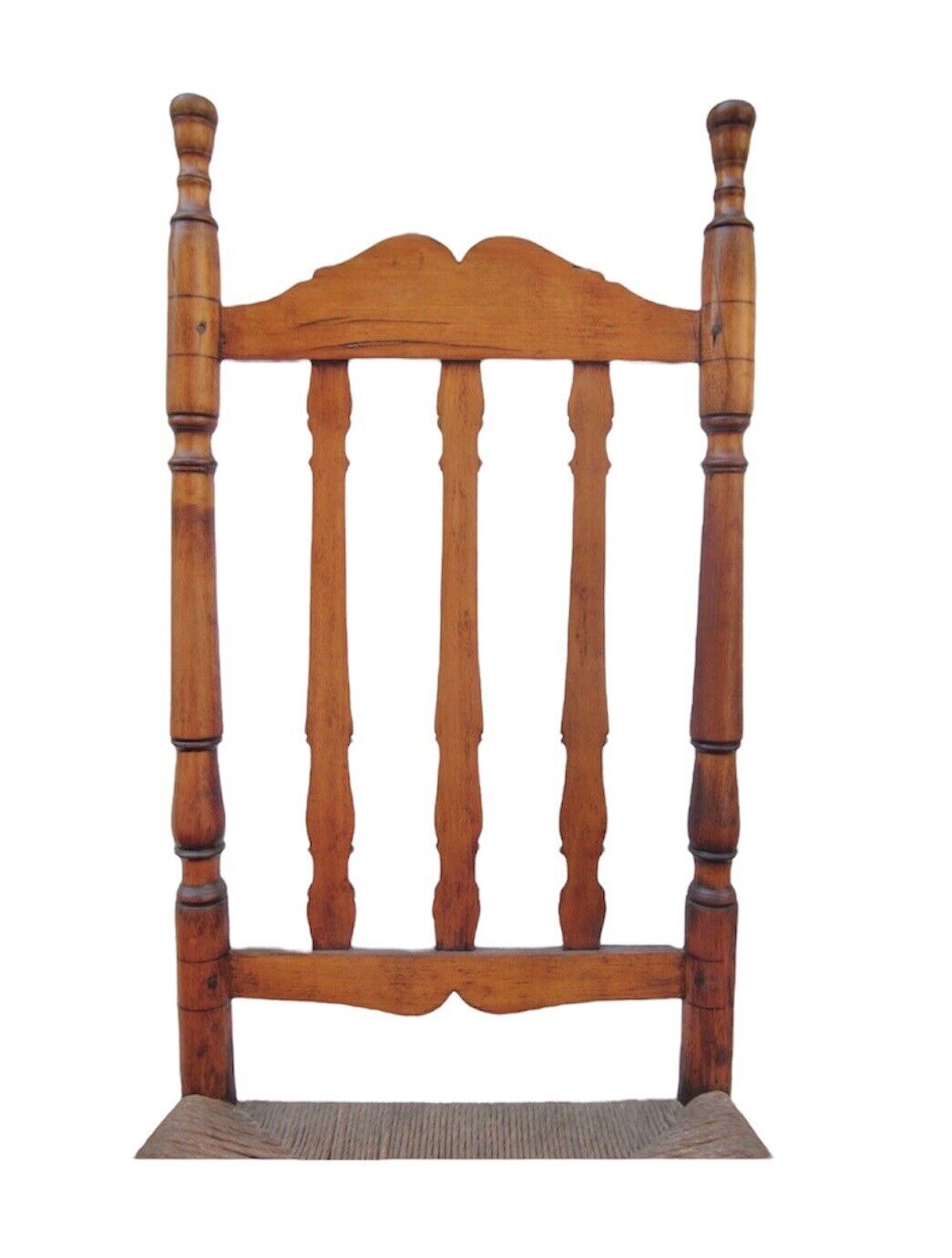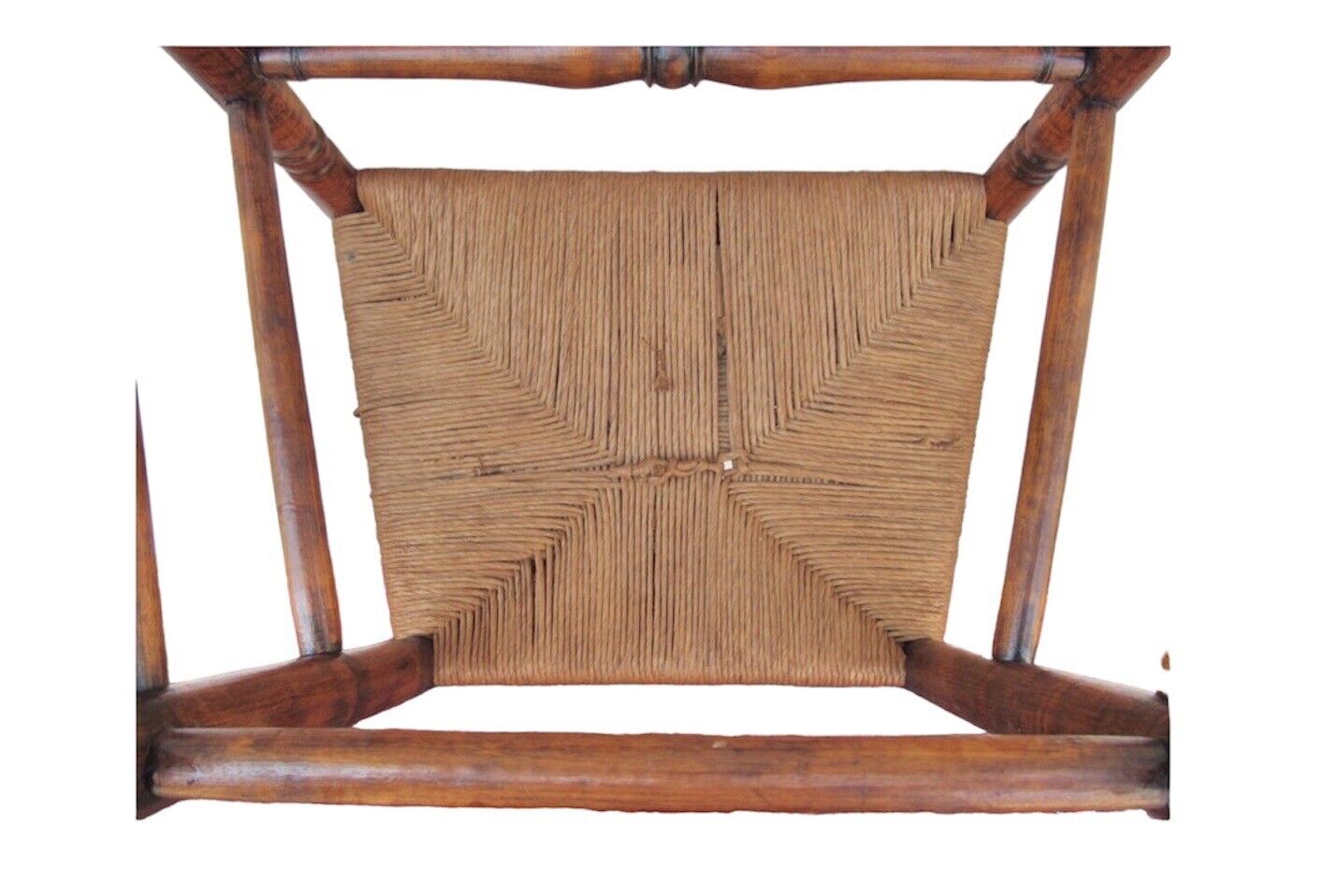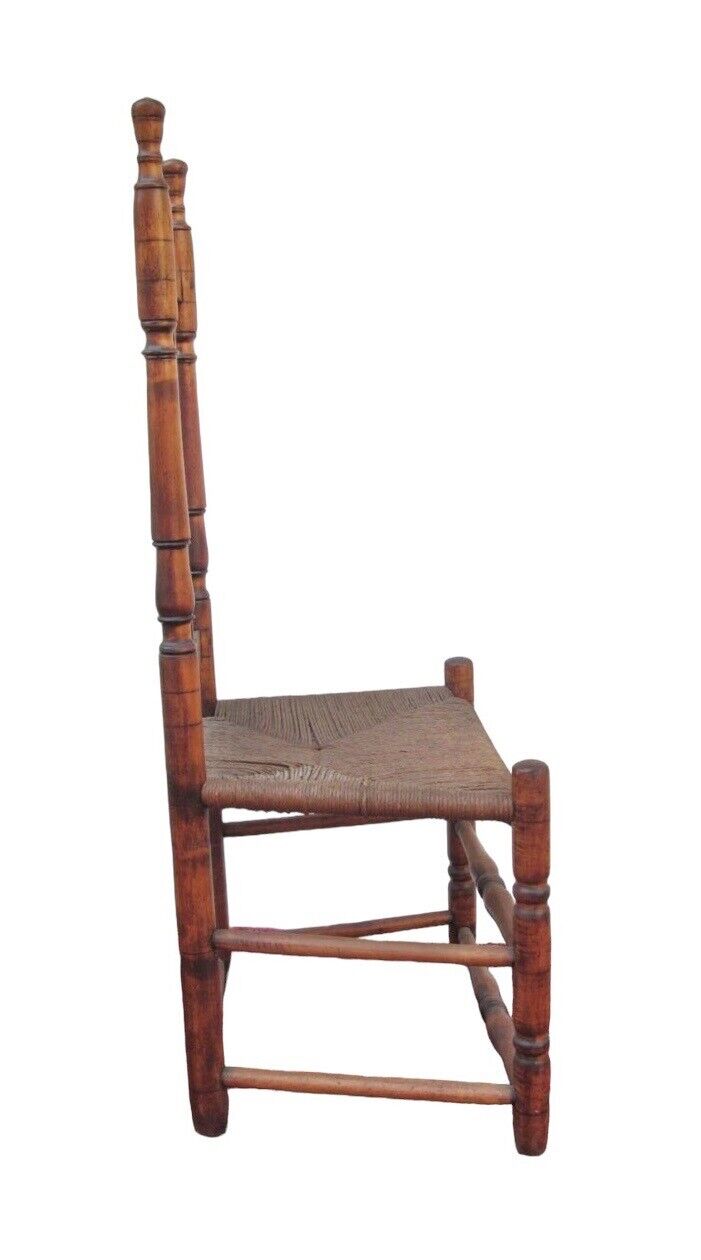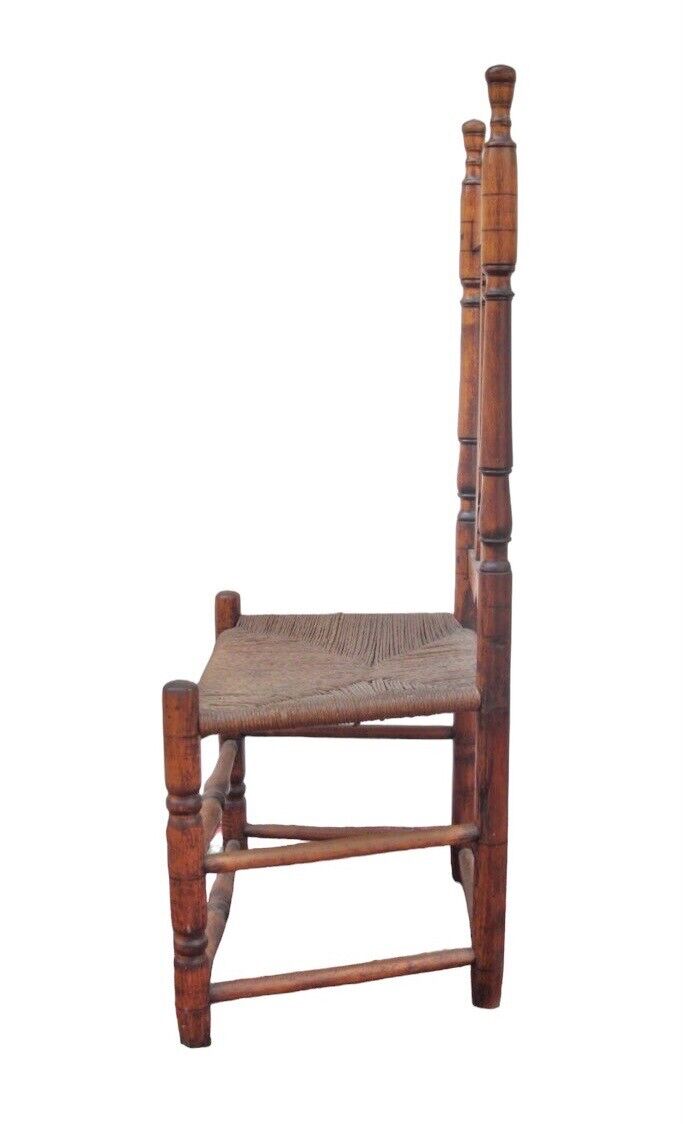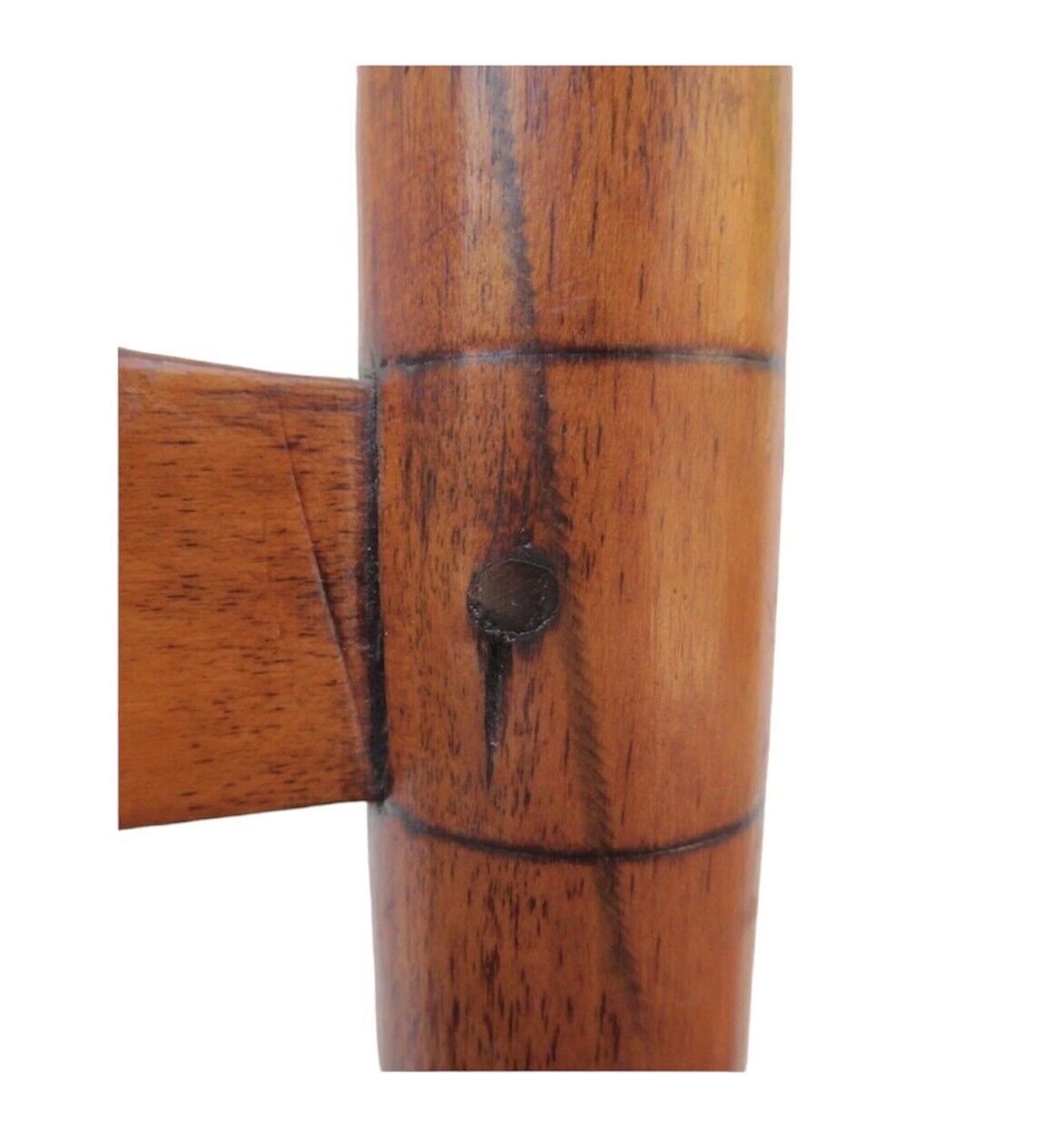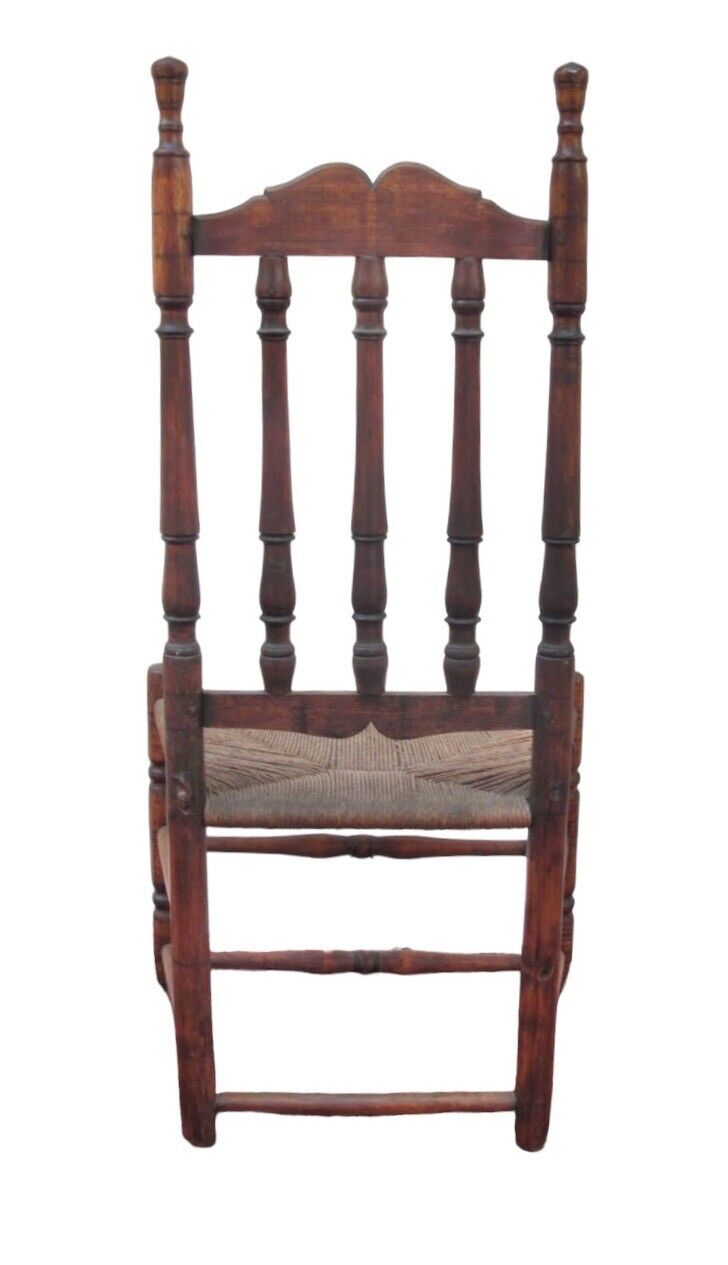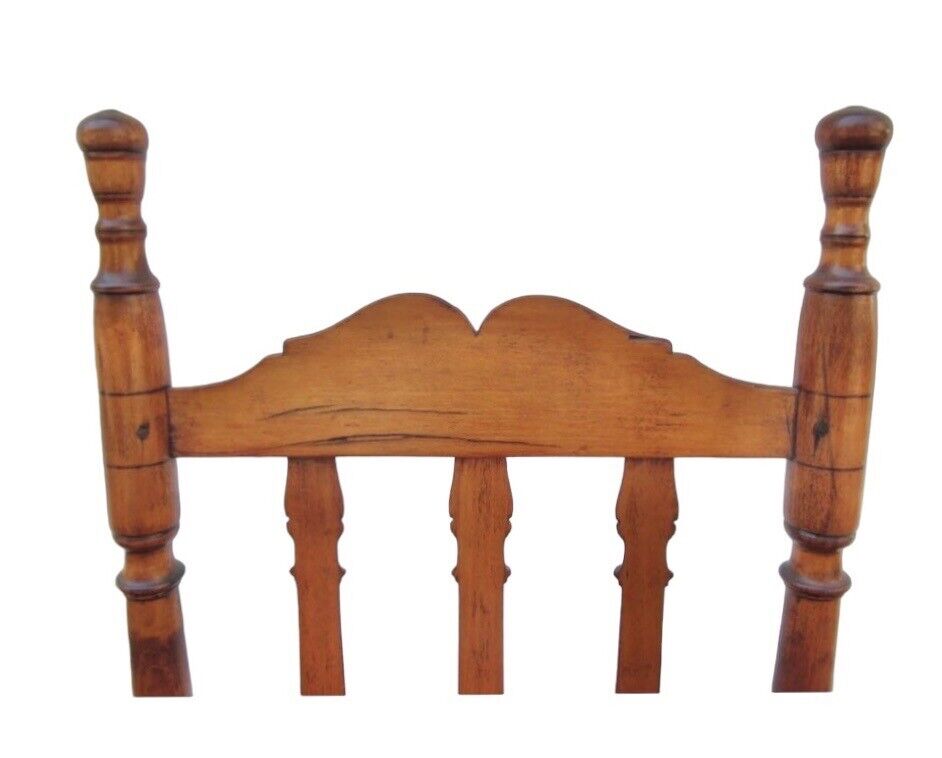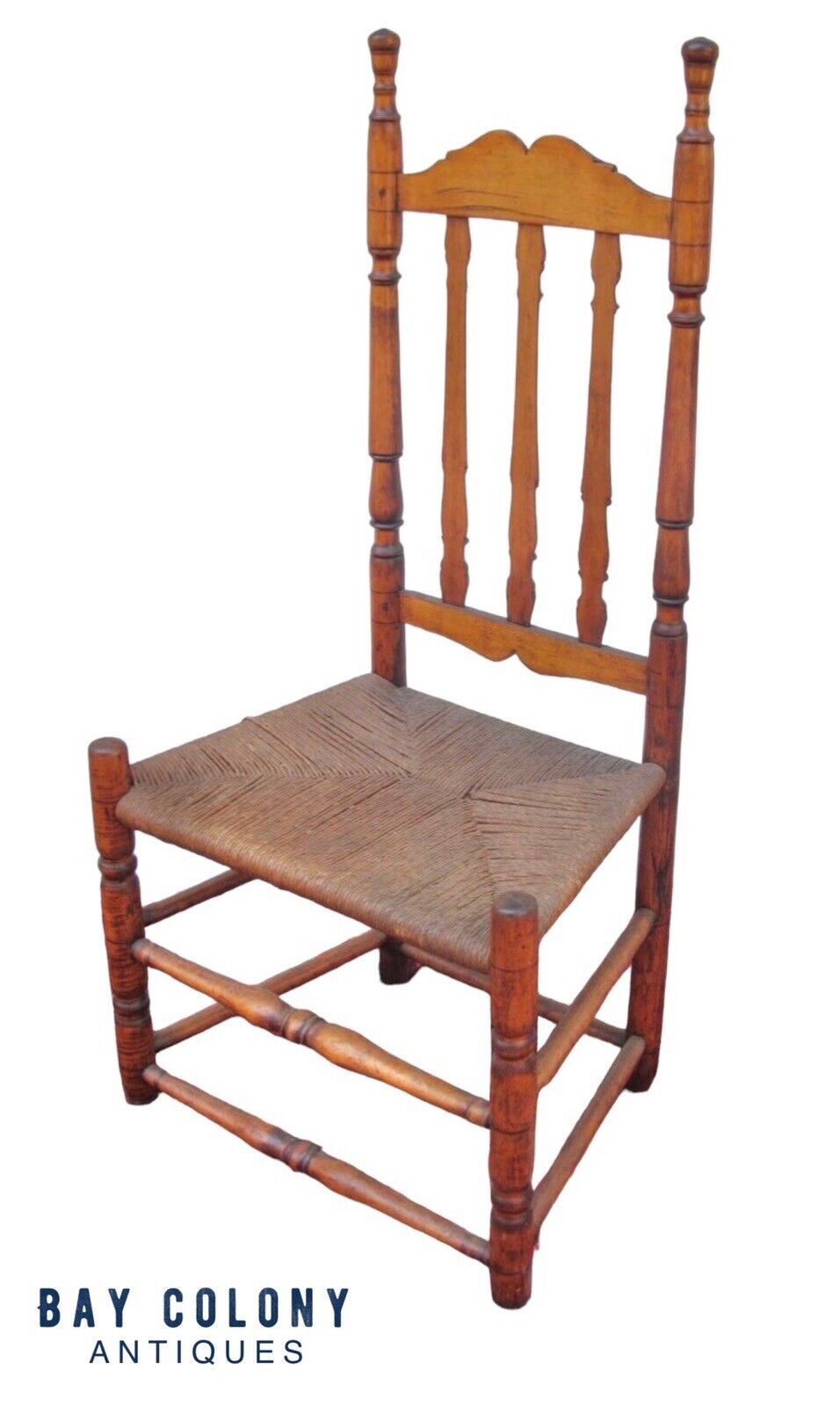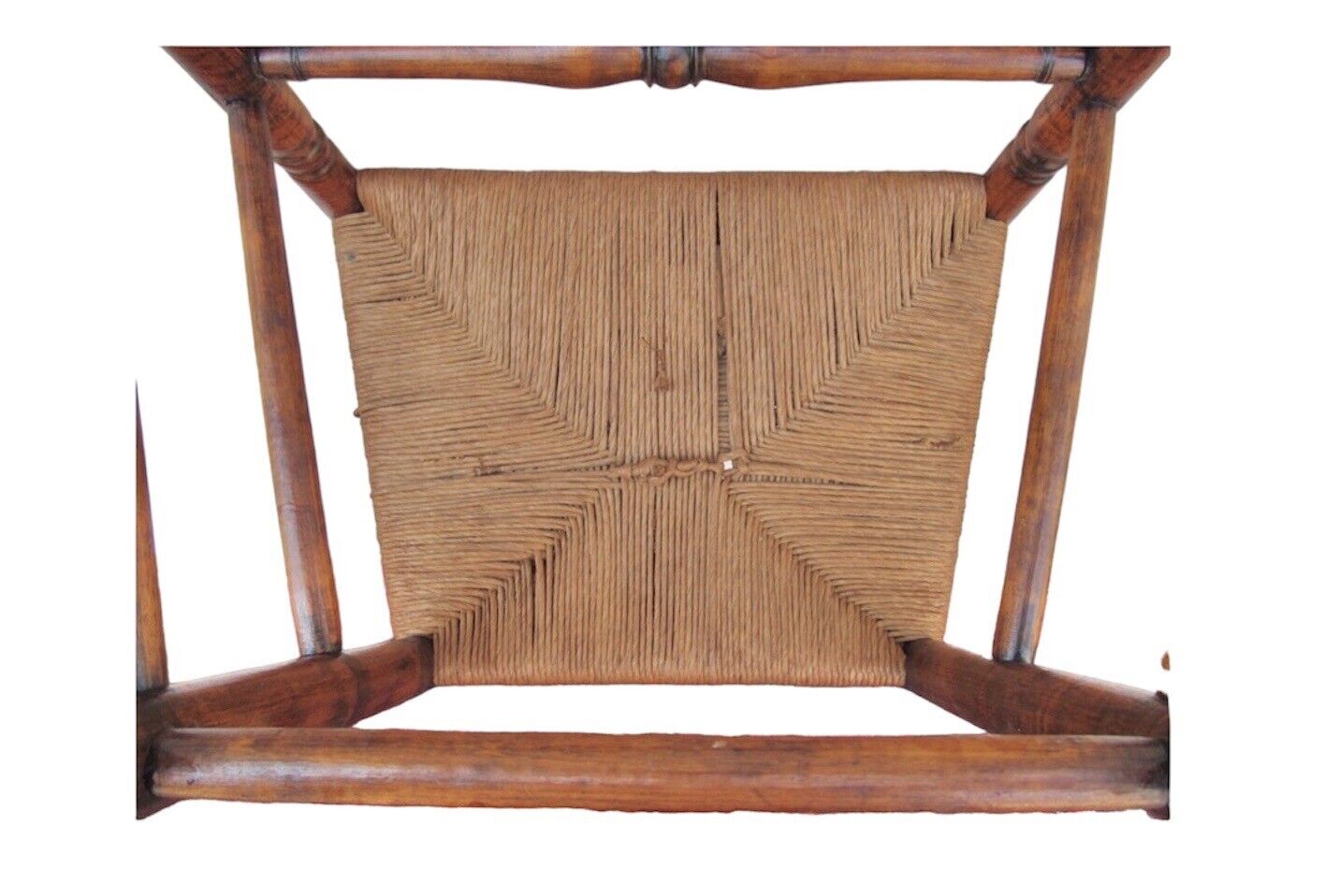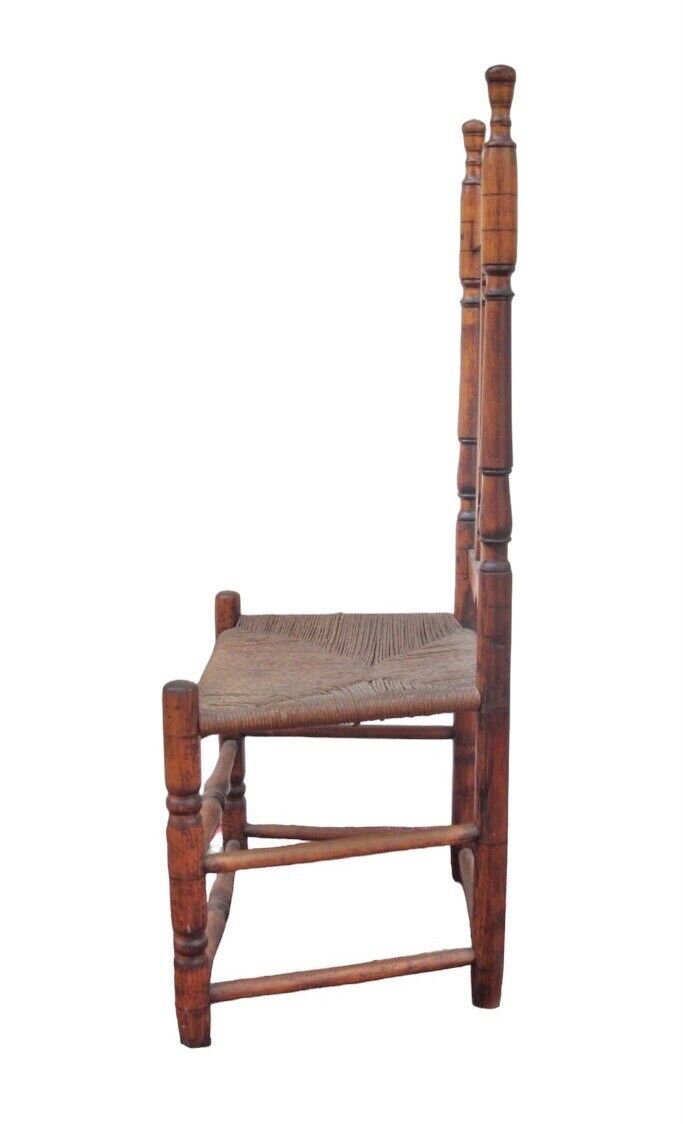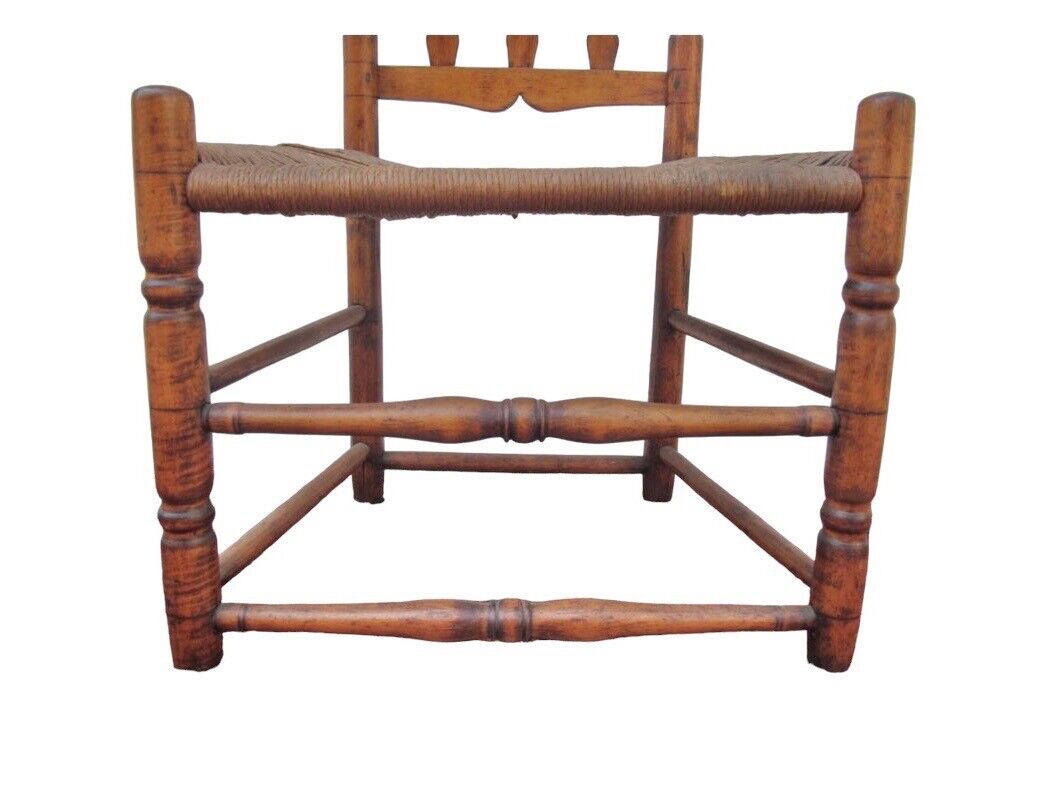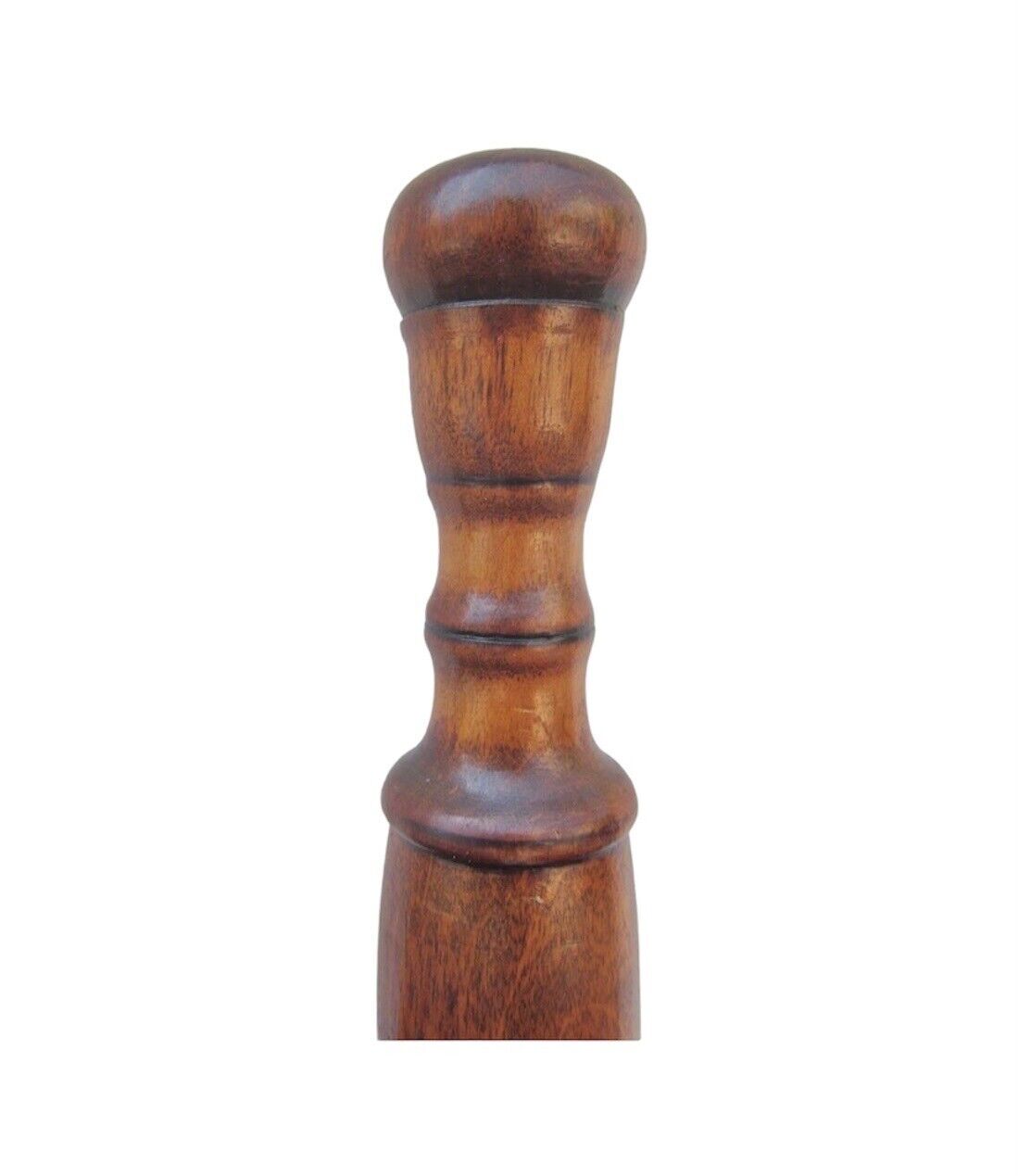Antique
Early 18th Century William & Mary Period Triple Bannister Back Maple Side Chair
Early 18th Century William & Mary Period Triple Bannister Back Maple Side Chair
Couldn't load pickup availability
With our absolute highest compliments Bay Colony Antiques takes the utmost pleasure in offering this exceptional and rare early American side chair. As anyone who has followed our online catalogues throughout the years already knows we are most passionate about the earliest and rarest examples of hand-crafted American furniture ever made. Our lifelong passion has brought us to every corner of the country in the pursuit of antique objects of historical value and increasing scarcity. As we have told many people before "If you have a piece we can't live without; the distance does not matter." We are able to explore every part of the country as we deal in large volume and handle the majority of deliveries ourselves, providing at cost deliveries which are offset by the spectacular antiques we find along the way. Fortunately, no such journey was involved in acquiring the chair we now presently offer as it came to us from a charming country estate in our neighboring state of New Hampshire. It is our belief that this chair is of New Hampshire origin and did not travel beyond a few counties away from where it was made until they day we brought it home with us to Massachusetts.
The earliest forms of American William & Mary chairs date roughly to the second decade of the 18th century. From the 1720's through the 1760's the William & Mary form remained popular and ultimately fused with the emerging American Queen Anne style developing stylized embellishments which contrasted the primitive simplicity of previous generations. Chair-making was a specialized trade separate from other furniture making traditions such as cabinet making, carving, and gilders or mirror makers. Although many craftsmen had overlapping skills and would employ whichever skills their patrons required, chair making in rural early America developed first among colonists who had no other means of finding seating and ultimately evolved into a profession and discipline all its own. Our particular favorite early American period chairs are those made for rural homes in New England where a century of primitive furniture construction and the influx of English trained cabinet makers melded into a unique interpretation of the William & Mary side chair.
This side chair is constructed with maple and features a hand tied rush woven seat. The seat is sturdy and dependable and will not faulter as long as the chair is treated with respect and care as it is nearing three centuries in age. The chair is tightly joined with great overall structural integrity due is in part to the pegged construction that strengthens the primary joints which weaken over time. Stylistically this chair is everything a historic furniture collector could hope for. The scrolled crest rail features a curved pattern similar to that of a cupid's bow design although bares a stronger resemblance to an architectural form often adapted on early Queen Anne mirrors of the second quarter of the 18th century. Below the crest a triple panel of turned balusters serve as the chair splats having been crafted by a master wood turner using a primitive lathe. Flanking the back supports are the two upright turnings of the chair frame which feature exceptional turned embellishments particularly at the finials which can be best described as acorn pattern. Early American turning patterns generally follow a formulaic design so collectors who have honed their eyes for subtle, yet distinctive design nuances often leap at the chance to add such a piece into their collection. The chair features deep scribe marks which served to configure the frame before assembly as well as double stretcher front and side supports along with a singular rear stretcher. Over time the chair has developed a rich and warm patina only nature can create and has worn finely with respect to its full history. This antique William & Mary chair measures 19 1/2" wide x 14 1/2" deep x 40" tall with a 14" seat height.
Share
